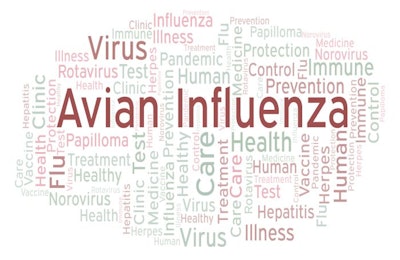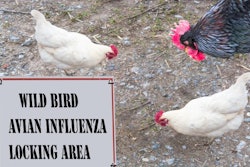
China’s Centre for Disease Control has called the emergence of a new variant of influenza virus of avian origin “a serious threat” to human health.
According to Daily Star, the H5N6 virus variant is causing a death rate of 50% among infected patients. This high mortality has triggered fears of a possible future pandemic.
Although the number of cases remains low, the World Health Organization (WHO) is urging Chinese health authorities to increase surveillance.
China registers 17 human H5N6 cases in past four months
Since the first case occurred in 2014, there have been 48 laboratory-confirmed human infections linked to this virus variant, reported the Centre for Health Protection (CHP) in Hong Kong last week. There have been 23 confirmed cases so far in 2021, including 17 in the four months to the end of September.
Of all the cases since 2014, only one was outside Mainland China. Over the latest period, cases were recorded in the provinces of Sichuan, Guangdong, Hunan, and Guangxi Zhuang Autonomous Region (Guangxi), as well as Chongqing municipality.
Most of the patients were in middle age, and had previous contact with poultry, either though owning birds or visiting a live bird market. Almost all became so ill that they were admitted to hospital, and all had been admitted to hospital. There have been no reports of infected patients passing the disease on to their families or other contacts.
According to the WHO, 24 deaths have been reported. These include 10 at the time of the first notification from China, and 14 patients died subsequently.
The latest three cases to be recorded by the WHO and CHP were on September 29-30. Two of the patients — a 26-year-old woman and a 55-year-old man — were from Guilin city in Guangxi province. Also infected was a male farmer aged 72 years from Chongqing. Both men had contact with poultry — the younger one at a live bird market, while the farmer’s birds subsequently tested positive for the H5 virus. Both the woman and older man have died, while second male patient was reported to be in a serious condition.
As well as the H5N6 virus, WHO reports there have been 58 confirmed human cases linked to the avian influenza A(H9N2) virus in the Western Pacific Region since December 2015. This total includes 17 cases so far this year. The two latest cases were in children who developed only mild symptoms. Both had known contact with domestic poultry before their infections.
HPAI returns to poultry in Laos
At the end of August, a flock of backyard poultry in the Lao People’s Democratic Republic tested positive for HPAI virus of the H5 family. All 415 birds died, according to the official notification to the World Organisation for Animal Health (OIE).
Affected was a flock in Xiangkhoang, a province in the east of the country that borders Vietnam.
Prior to the latest outbreak, the country had been free of HPAI since December of last year. In August and September of 2020, two outbreaks were reported in a southern province.
Avian flu situation 'resolved' in Iran
In the past week, Iran’s veterinary authority has declared to the OIE that the HPAI situation is now closed.
Between December of 2020 and June this year, 55 outbreaks of HPAI linked to the H5N8 virus variant occurred in five regions of the country. Directly impacted were more than 1.3 million poultry as a result of mortality or culling.
Two weeks ago, HPAI was reported in poultry in a number of Asian states, including India, Pakistan, Taiwan, Vietnam, and Russia’s Far Eastern federal district. These countries have officially registered no new cases with the OIE in the meantime.
View our continuing coverage of the global avian influenza situation.

















